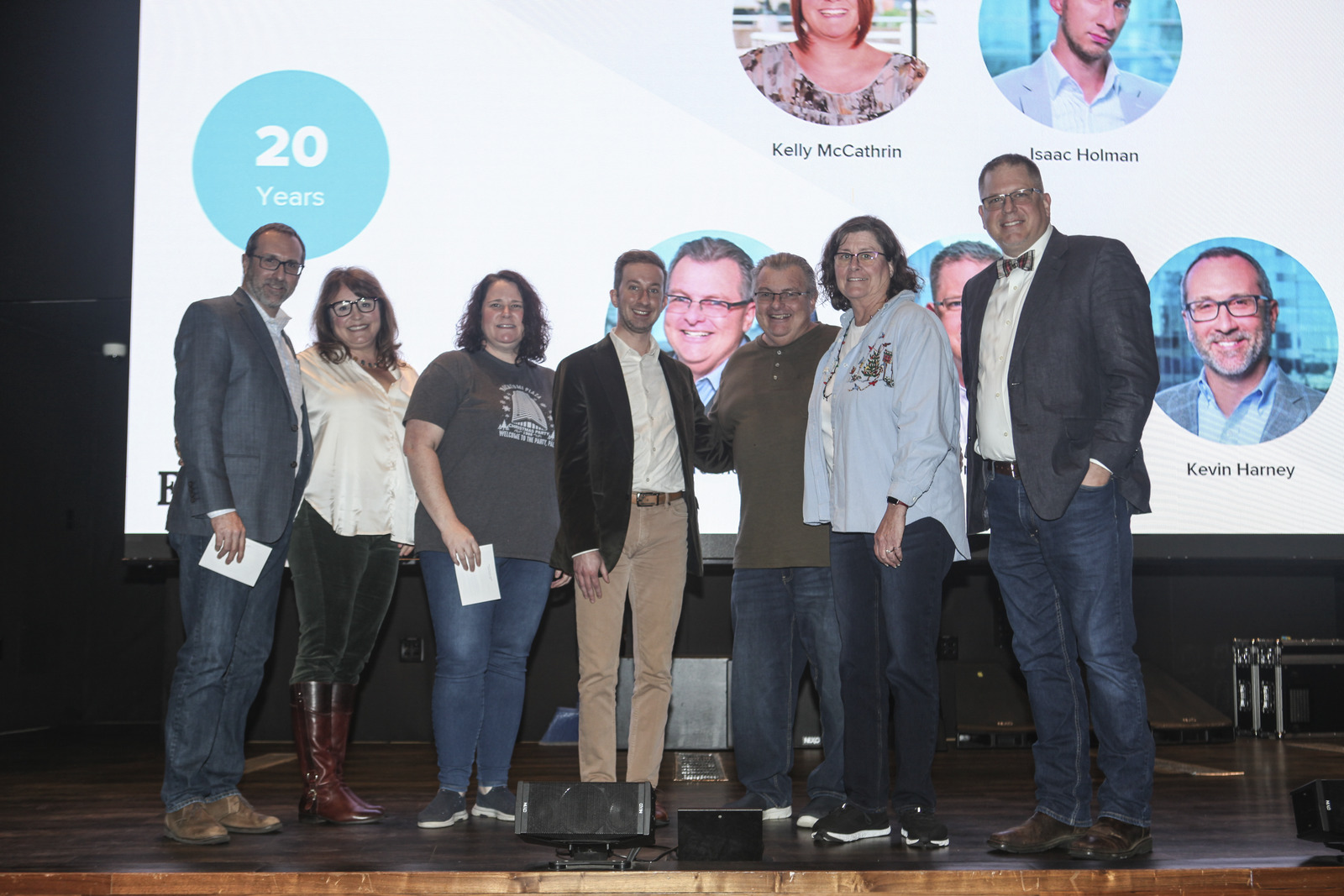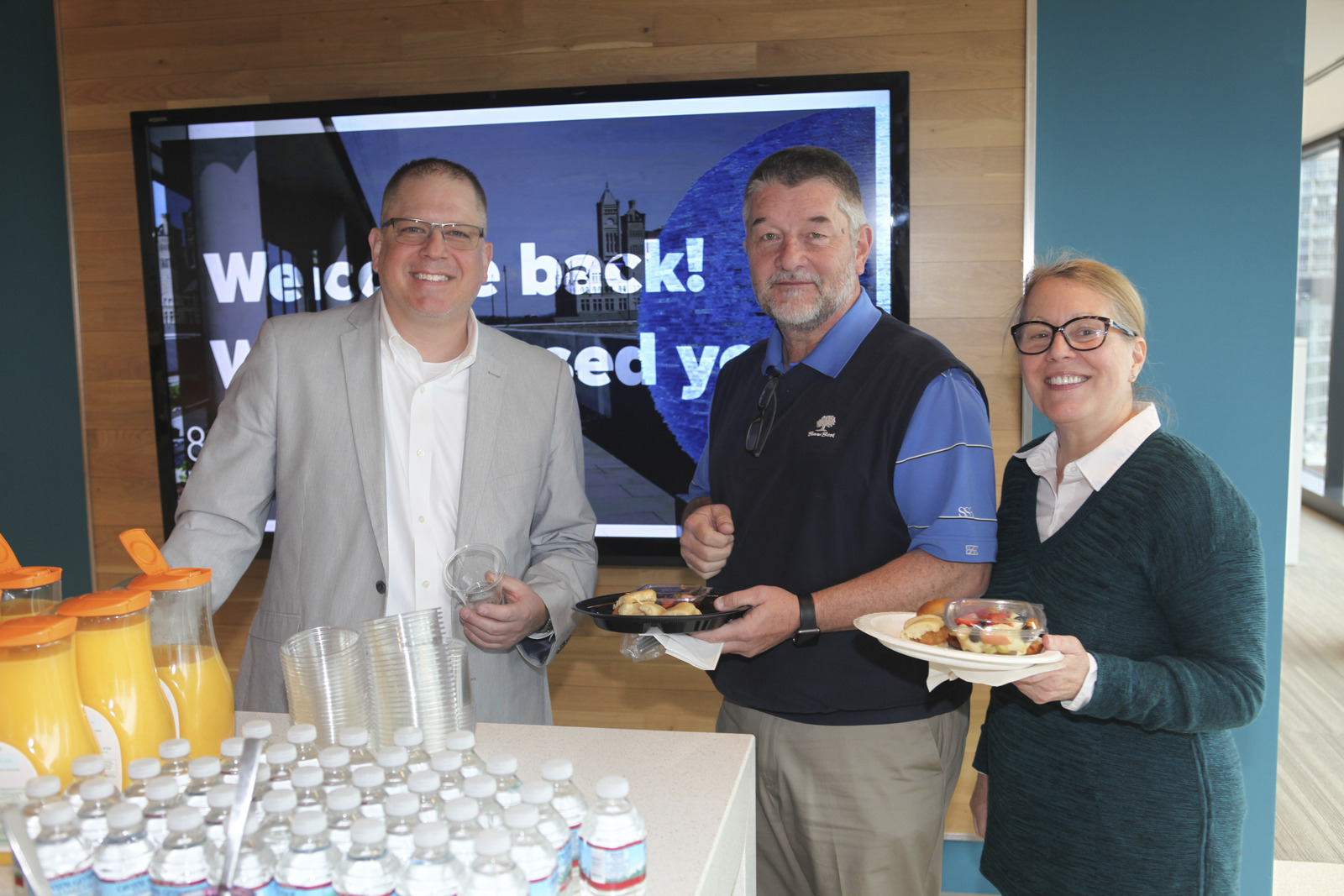Employee Spotlight: Jason Cowan
United States Marine Corps veteran, team leader and newly named principal, Jason Cowan, has spent his entire corporate career at ESa. He spoke with us about his journey–the growth that led from hanging pencil drawers around the office to his current role, and how ownership-thinking and servant leadership is his driving motivation.
What is your role at ESa, and what is a typical day?
I was recently honored by being named a principal at ESa. My role as principal focuses on the operational side of things. Mondays are the big day, from about 8:30 a.m. until noon, I am part of a group of team leaders from across the firm who have several meetings with most if not all our production teams. To help orient myself, I come in with a list of things from the previous week that need to be worked on, but things can really change between Friday and the start of the week. If I had to describe my workflow it would be like being in the batter’s box, and the only pitch thrown at you are curve balls. We never really know what to expect, but I try and follow through on hitting these weekly goals and deadlines. A key element of this is working with folks on the production side to see what they need and how we can best allocate resources to aid their success.
As the week progresses things come up and more challenges need to be solved. Flexibility, reading the room and communication is key to keep things moving forward. The goal is to keep solving problems and check off most things on the list before the weekend and we start all over again on Monday with a new slate of goals and deadlines.
In addition to this internal coordination role, I also play a part in recruitment. We are always recruiting and looking for new potential team members and interns to join ESa. People reach out all the time and we review each resume that finds its way to us through the ESa site or other channels.
Design Manager, Victoria Codrington and I review every applicant that requests placement in our internship program. Especially for the intern program there is a predetermined end date, so we are always looking for the next group of designers to intern with us. While not an everyday thing, recruitment and reviewing of applications is another facet of responsibility that is always in play.
Overall, I equate my role to playing chess. Good chess players look three, four, five moves ahead and are not just focused on the board as it stands now. Whether it be coordinating firm resources to help the production side meet deadlines, finding the next class of interns, or recruiting future fulltime team members, I am always thinking ahead of what comes next and what is needed to succeed.

How did you come to work at ESa?
My joining ESa was not something I intentionally sought out, it just happened! I was serving active duty in the United States Marine Corps and was dating my now wife. I knew I wanted to get married, but I had seen too many of my friends get married and then have to be away constantly. That seemed like a bad environment for a marriage, and I didn’t want to do that to us. I moved to Nashville, since she was studying at Lipscomb University, and I started going to Middle Tennessee State University studying construction management, with the goal of working at a concrete plant or for a contractor. As part of my studies, I needed to learn AutoCAD, a computer program used to develop detailed 2D and 3D drawings/plans for use in architecture and engineering, and decided to go to Nashville State Community College. While I was at Nashville State, learning AutoCAD, one of my instructors mentioned that there was an architecture firm in town that needed someone to run errands. I applied and have been with ESa ever since.
I initially worked part-time in our storage area over at Lowes Vanderbilt, our old offices, and was working to clean out and organize storage, hanging pencil drawers, moving cubicle walls and other things that were needed around the office. Truthfully my intention the whole time was not to stay, I was going to work until I earned the AutoCAD certification and then go back to graduate from MTSU. During my time working I had taken an interest in the development of architectural models and would spend time in the model room watching and assisting with model construction. Suddenly, one day, there was an opening for a role in the model room. I was interested and the firm needed someone to finish a model for Third and Commerce that was still in production. I offered to give it a shot and ended up working in the model room for the next several years.
After being the model guy for a while, ESa principals Todd Hilbert and Eddie Lewis wanted me to expand and so they got me a computer and I started working on documents with Craig Holloway, another of ESa’s newest principals. It was during this time when I realized that I had a great position at ESa and that I wanted to double-down on these opportunities that the firm had given me. More importantly, I realized that I loved what I was doing, the people I was working with and wanted to stay onboard with a great company. I decided I would stay around and hang out for a while longer.
More than twenty years later I am still here hanging out and having a great time.
What is the best piece of advice you have received?
The best lesson I have learned is to listen first. I am a problem solver by nature, but sometimes you can get in the way of the real problem and compound it by thinking you are helping when you really don’t understand the context. It is important to take a step back, listen and gain true understanding of the situation before jumping into problem-solver mode.
It is also important to communicate what you see the problem as being. This gives the other party a chance to let you know if you are on the right track. This all becomes that much more important in tense or stressful situations.
What is it to you that sets ESa apart?
I have always said that there is something different in the water here. The best explanation I can think of that sets ESa apart is trust, honesty, respect and forgiveness. Three of those are part of our guiding principles and all are central to how the firm operates.
We have to be able to be open and honest with each other and trust in one another. The environment here fosters that and creates supportive relationships that strengthen our bonds with each other. Our approach to caring for each other comes through in the work we produce and the way in which we interface with clients.

You were recently named principal, congratulations! How do you feel about this change?
I am humbled by this and honestly want to work even harder to live up to it. I feel like one of the things it represents is being available and present for everyone at the firm, regardless of team. If I can help, that is what I am here to do and I want to continue to be a resource for anyone who needs it. To me that is the core of what it means to be a leader.
My time in the Marines impacted my understanding of leadership. I have seen great leadership skills in action and the opposite. I have learned and try to embody the idea that you can be a leader regardless of your vocation or position. Everyone can be a leader, mentor and take ownership. A consultant I have worked with introduced me to the term “ownership-thinking” and that encapsulates my approach to what it means to be a leader at ESa.
Principals at ESa have a history of leading from the front, and even before I was bestowed the honor of being named one, I tried to live up to the leadership standards set by current principals and those who came before. I have always thought that regardless of position I had a responsibility to represent the company as best as I could, as if it was my own personal reputation on the line. When we interact with clients, consultants and others we are implicitly representing the firm. I have always tried to represent ESa as best I can by setting an example. Sometimes that personal interaction is the only real contact with the firm people may have, we want it to be as positive and impactful as I can muster.
How do you spend your free time?
Truthfully, I don’t have a lot of hobbies, I work to keep myself busy. My best friend has a glass business and sometimes, when he has a large job, I will offer to go work with him to complete it. He has commented before that I am the only guy, he knows who would use time off to go and help someone else at work.
The friend of mine who owns the glass company is also an auctioneer and I also help with that enterprise.
There are two auction companies I help with, and I really enjoy that. If I have a hobby, these auctions would be it. A lot of these auctions are for charity events, and we get the chance to interact with incredible people and raise a lot of money for some incredible causes. One recent auction was in Chicago, at the end of navy pier, for the American Heart Association and we were able to raise over one million dollars.
I will clock out of work, board a plane, and spend the weekend with my friends at a charity auction. It can be a lot of work, but I enjoy it. I don’t vacation very well and get restless if I am not busy. Some weekends I will go home and help my dad, who has 110 acres, with managing the land.
Staying busy and helping others – that’s the core of my role here at ESa and it is what I love to do even when I am off the clock.